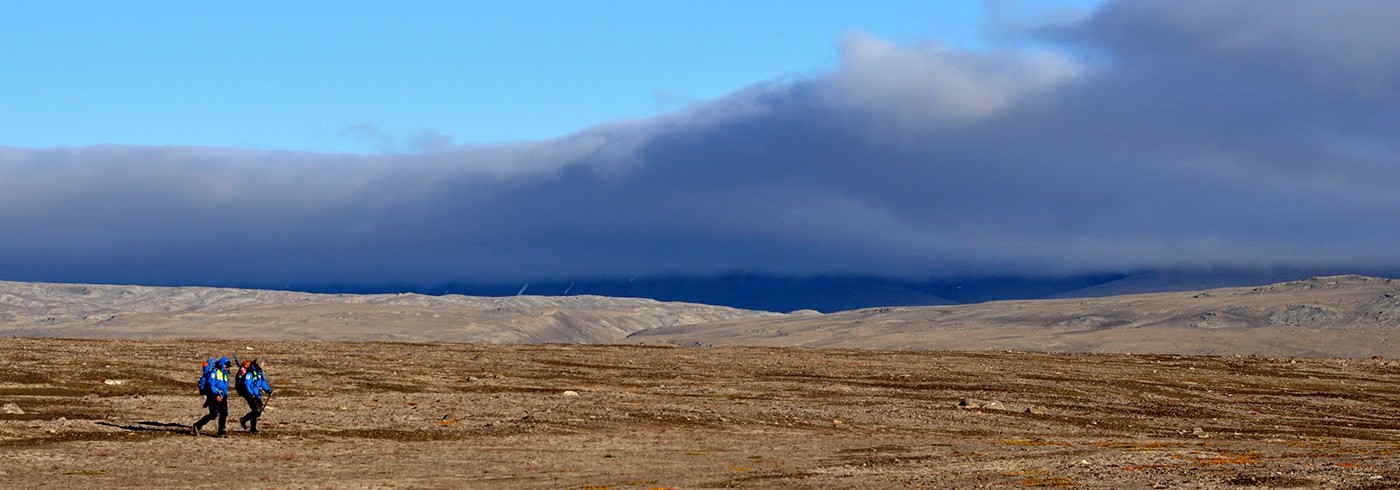Visiting Washington Land wasn’t originally on our schedule. We were supposed to spend two weeks in Hall Land and later move the camp to Ellesmere Island. However, Hall Land wasn’t exactly what you call a biologist’s dream. We enjoyed exploring the place, which was so different from anything we have seen before, we collected a huge amount of valuable data and we were excited about spotting a herd of muskoxen; but when we heard about the lush wildlife in Washington Land observed by the Boulder Team, we couldn’t stop with arguments in favour of leaving Hall Land earlier and including Washington Land as another sampling location.
The decision-makers on Oden were positive about our plan and we were granted four days in Washington Land. Our new camp site was situated in a valley shaped by the glacier, there was more water and vegetation. There was more orange-coloured willow patches, which we ironically called “jungle”. Since our first days in Hall Land were in the empty arctic desert the willow patches really reminded of a jungle. While in Hall Land we found many snowy owl nests and arctic fox dens, in Washington Land we found lots of old bones on the surface. Instead of muskoxen, in Washington Land we saw dozens of Arctic hares.
The Arctic hares are very cool animals. They gather in larger groups and it’s easy to spot them as they have white fur even in summer. We usually saw about 20 or 30 of them, but sometimes there were more than 100 at once. During my bear watch, I came out of the kitchen tent and froze spotting about 20 hares just above our camp. What a lovely visit! Later, we decided to sneak closer to observe them at a shorter distance. We were approaching them slowly, always making only a few steps and waiting for them to get used to us. They didn’t seem to care. We managed to get at a 20-meter distance and they still continued eating and watching their own business. They probably considered us more of a muskox than a wolf. After a while, they started to leave the place step-by-step, moving to a more distant patch of food. The last to disappear was one of the young hares, recognized by a greyish tone of fur, which gave us one last curious look before running away.




